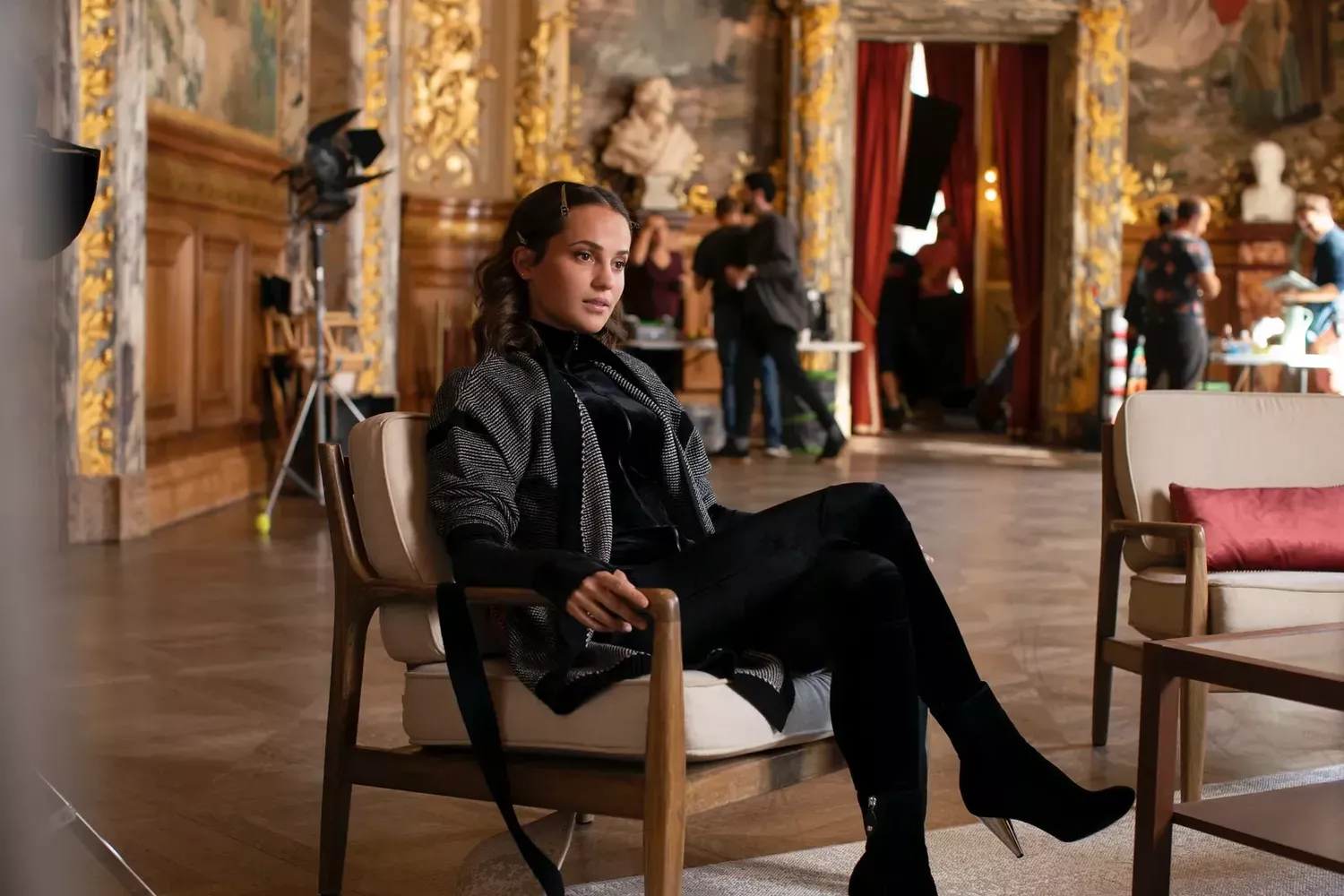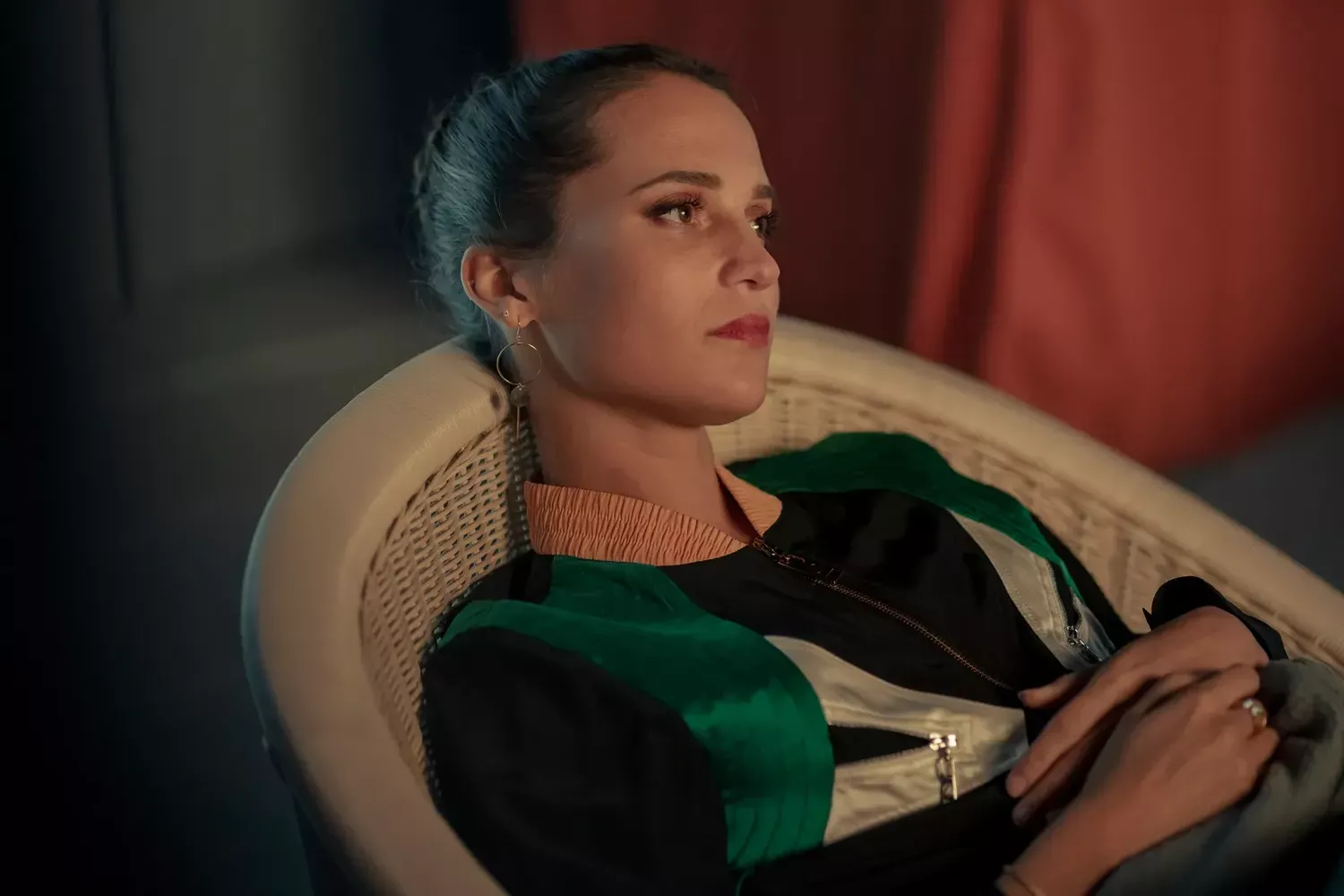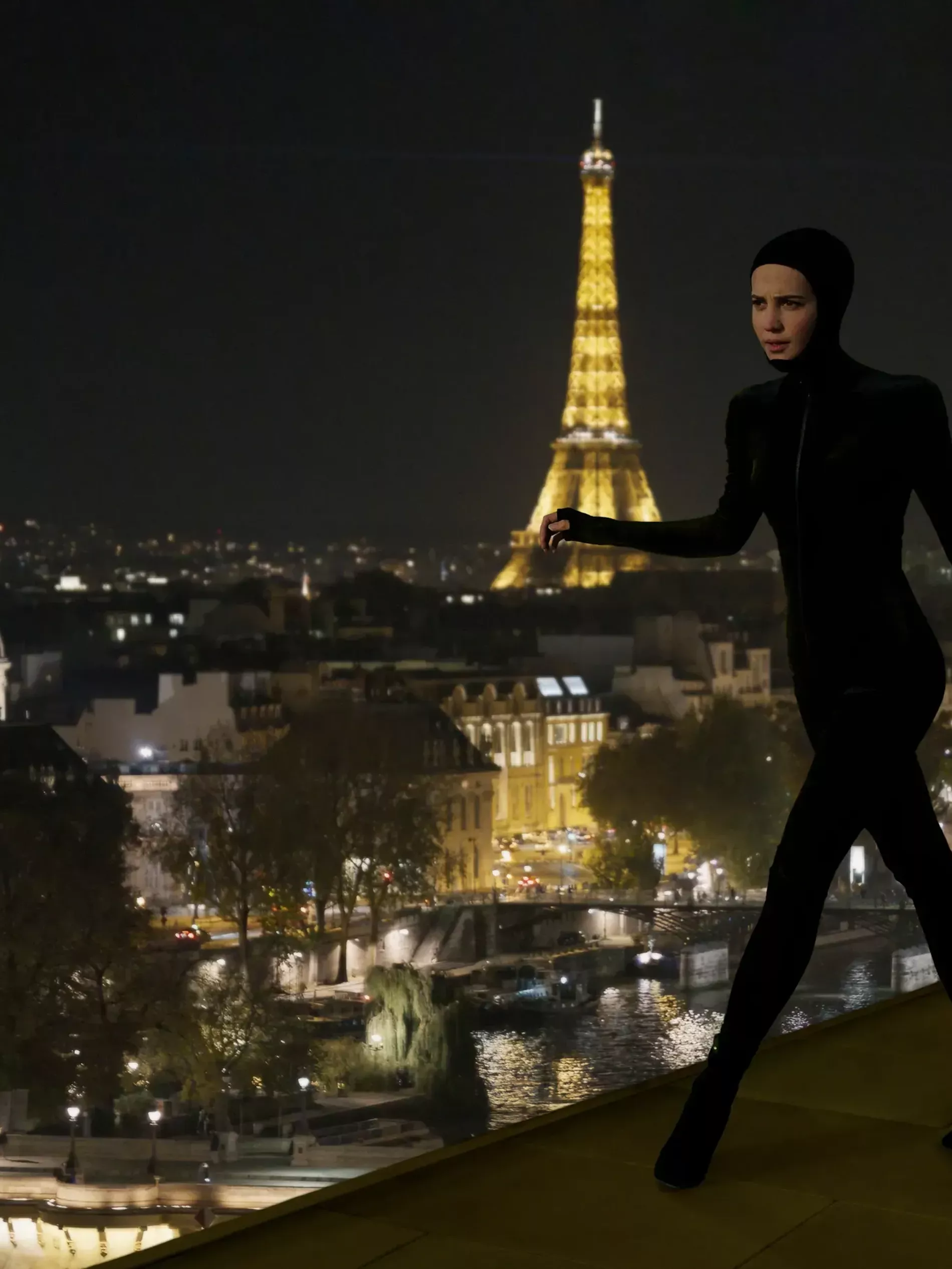Ahead of its Cannes premiere, Vogue discovers everything you need to know about the re-imagined iconic tale
When Irma Vep first premiered at Cannes, the film—written and directed by Olivier Assayas—was screened in Un Certain Regard, the festival’s sidebar for somewhat less established filmmakers. The year was 1996, and Assayas, who had riveted critics with his teenage cris de coeur Cold Water two years earlier, hadn’t yet begun work on Sentimental Destinies (2000), a sprawling period drama that kept being pushed back. So, he’d made Irma Vep in the interim, devising a story that reconciled the ghosts of cinema’s past with a looser, more experimental future. (It was also kind of a comedy, a first in his career.)
Centered by an alluring performance from Maggie Cheung, Assayas’s swing in the dark was handsomely rewarded, and Irma Vep soon considered an indelible addition to the international indie canon (not to mention the movies-about-movies canon). Yet its actual Cannes debut was a low-key, quite late-night affair. “The film was not a big deal at the time except in the Chinese press, because Maggie was such a huge superstar. So our screening was at midnight, and after the screening, 10 or 12 of us had dinner at the last pizza place open on the harbor,” Assayas says with a laugh. “It must be one of my best Cannes memories—it’s Cannes without the bullshit. You’re just there, you’re with your friends, you made a movie with no money, and you end up having pizza.”
Needless to say, he’ll have a very different experience this May, when Irma Vep heads to Cannes a second time—now, reimagined as an eight-part limited series with Alicia Vikander, Devon Ross, Carrie Brownstein, Adria Arjona, Tom Sturridge, and Jerrod Carmichael. (For those who can’t make it to the Croisette, don’t worry; Episode 1 will air on HBO and HBO Max just a few weeks later, on June 6.) Assayas credits Thierry Frémaux, the festival’s longtime general delegate, for taking the series on. “You’re not supposed to show anything that has to do with TV in Cannes,” he says, “but he loved it. He understood what it meant in terms of dealing in a modern way with film history.” (Irma Vep will screen out of competition, in the “Cannes Premiere” section created last year.)
In this new version, like in the film, a major movie star signs on to lead an adaptation of Les Vampires, Louis Feuillade’s silent film serial from 1915-1916. (“Irma Vep” is a character, and her name, a clever anagram.) Helming the production is the brilliant but mercurial René Vidal, and as the chaotic shoot goes on, the lines between fact and fiction, actor and character, become dangerously blurred. But unlike Cheung, who played a version of herself, Vikander plays Mira, an American actress keen to change the direction of her career—and shake off a recent tabloid scandal. “She’s in a place where she’s focused her entire life on jumping from city to city and job to job—and is probably trying to figure out who she is away from that world, away from being on a film set,” Vikander says. It’s a problem that the actress (and new mom) knows well. “Even though I had very solid friends, until I met my husband and had my family that now comes with me, there was a constant feeling of being a nomad, and that kind of makes you feel like you don’t have roots anywhere,” she adds. “Emotionally, that can be quite tough.”
Vikander and Assayas—both executive producers on the series, along with the likes of Euphoria creator Sam Levinson and playwright Jeremy O. Harris (who provided “some American feedback on something that was very European,” as Assayas puts it)—first met seven or so years ago, when Assayas was making 2016’s Personal Shopper. “It was before they knew if [Kristen Stewart’s] schedule was gonna work out,” Vikander explains. In the end, of course, it did, “but I got the chance to have lunch with Oliver, and since then we’ve become quite good friends.”
“We just happen to like each other very much, and so we had drinks and met,” Assayas says. “It was not obvious that this would turn into a collaboration—it didn’t need to. But all of a sudden, once I had the idea of developing Irma Vep, I said, ‘Oh, that would be really cool to do with Alicia.’”

Photo: Carole Bethuel/HBO
Since making Carlos, a 2010 miniseries about the Venezuelan terrorist Ilich Ramírez Sánchez, Assayas had often been approached about working in television again. The idea didn’t immediately appeal to him. “I’ve always preferred shorter formats, so I didn’t see myself as someone who did series,” he says. But his agent, Stuart Manashil, encouraged him to rethink that. “He said, ‘But Olivier, you should be making a series. You like to develop characters,’” Assayas recalls. “I said, ‘Yes, but I don’t feel comfortable telling someone else’s story.’” So, Manashil replied, “‘why don’t you base a series on one of your own movies?’”
That suggestion led Assayas rather quickly to Irma Vep, which he’d shot on a shoestring budget in only four weeks. “It kind of changed my way of filming, and even of conceiving filmmaking,” he says. “So all of a sudden I said, ‘Yeah, that’s kind of a cool idea, because I can work on aspects of Irma Vep that I had no chance to explore earlier.’” Given the freewheeling spirit of that film, his ambivalence toward the series format now seemed like a good thing. “I watch very few series, if any at all, and I think that ended up being very useful, because I don’t know what the rules are,” he says. “I have no idea what people expect from a series. So I really had to reinvent the format for myself.” To Vikander, who worked for years in Swedish television but makes her English-language, limited-series debut with this project, it felt just like making a movie. “It was a long shoot, but then it was also a very pleasant one,” she says. “It might be one of the nicest sets I’ve ever been on.”

Photo: Carole Bethuel/HBO
Creating a new female lead was important to Assayas from the beginning. “Mira is a very different character from Maggie, because Maggie was playing herself, basically,” he says. “But there’s another layer to the original Irma Vep, which is that in the end, we got married.” Assayas and Cheung wed in 1998, staying together for three years. “It’s actually the main reason why I didn’t use another Chinese actress,” he continues, “because I didn’t want to duplicate Maggie. It was impossible. I had to take the story somewhere else, so it could be the memory of Maggie but also an opening of something new.” Quite a bit of this context actually shows up in the series, primarily through the character of René. Once played by Jean-Pierre Léaud—whose boyish good looks as a favorite of Truffaut and Godard had mostly scattered by the late 1990s—the part has been turned over to the younger, nervier Vincent Macaigne, and without revealing too much, his story has a lot in common with Assayas’s. “When I had Jean-Pierre Léaud playing René Vidal, I was not exactly making fun, but he was a filmmaker that was very far from me. He was experimenting into weird areas of cinema without exactly knowing what he’s doing,” Assayas says. “But 20 years later, I realize that I’ve become René, totally. When I made the original film I didn’t identify. Now, I get it. I’ve walked the walk.”
Vikander’s wardrobe—specifically, the catsuit she wears as Irma Vep—also zags away from that in the 1996 film. Cheung’s clingy black latex, memorably sourced in a sex shop, has been supplanted by a rich (and pretty comfortable) silk velvet; something that hews closer to what Paul Poiret made for Musidora, Les Vampires’ original Irma Vep, over a century ago. Louis Vuitton artistic director Nicolas Ghesquière, a longtime friend and collaborator of Vikander’s, had a hand in this shift. “I knew from both ends that they’d mentioned one another, saying, ‘Oh my God, I’m such a fan of his,’” she says. “I was just a bit of a matchmaker there.”
“I thought it was really interesting to bring someone who has the status that Paul Poiret had at the time, to work on something that would not look like the catsuit all the superheroes wear,” Assayas says of Ghesquière. “Every single superhero movie has a leather catsuit, and they all end up looking the same. What was sexy once becomes dull and boring now.” He tried a different tack for Vikander’s Irma Vep, leaning into the uncanny. “We thought it was really interesting to create something that is very feminine, but at the same time had something eerie,” Assayas says. “Irma Vep is totally no superhero; she’s more like a ghost.”
From Vikander’s vantage, they got the look—and the feel—exactly right. “The catsuit has an optional mask so you can only see the eyes,” she says, and wearing it “kind of makes you want to move in a certain way. I felt like I stepped into this creature. And that’s when the magic truly happened.”
Originally published in Vogue US
